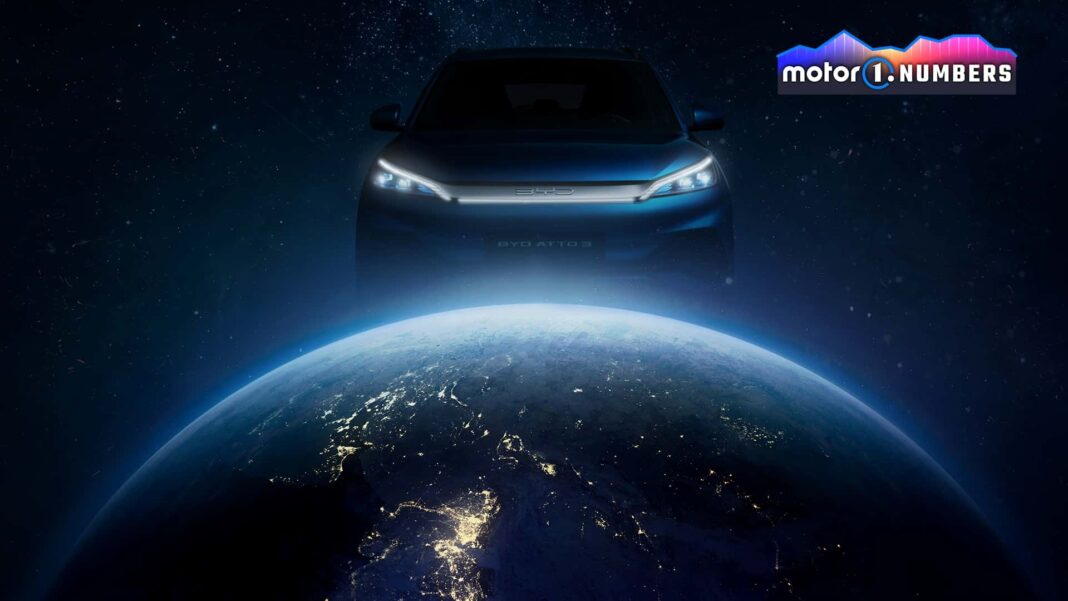It is no secret that China is a big market for electric cars. More than half of the world’s BEVs (Battery Electric Vehicles) are sold there, so it is obvious that this country has the greatest supply.
According to my research, about 468 all-electric models (excluding commercial vans, light commercial vehicles, and rebadges) will be available by October 2024, of which 267 are Chinese (57 percent of the total). BYD is thus set to become an even more serious competitor to Western automakers.
Growing in size
BYD started producing cars only 22 years ago, with cars copied from the Western market and low-quality standards. Then, between 2018 and 2019, while other automakers faced pandemic and semiconductor problems, BYD accelerated its plans by becoming a leader in the domestic market. In 2023, it surpassed Volkswagen’s sales and became the preferred brand in China.
The leadership resulted from a major product offensive that included new models in almost every mainstream segment. The strategy has been to target both the pure electric and plug-in hybrid car markets with cutting-edge software, infotainment, and battery performance.
BYD Group’s global sales in units
The increased competitiveness of its cars has affected sales, which rose from 427,300 units in 2020 to 2.89 million last year (excluding volumes from BYD’s other brands, such as Denza and Yangwang). For comparison, over the same period, Tesla’s global volumes increased from 500,000 to 1.81 million units.
This year through September, BYD and all its brands sold 2.75 million units, a 32 percent increase, including 1.17 million pure electric cars, a 12 percent increase. Tesla sold 1.29 million electric cars, down 2 percent. The gap is closing.
Global sales of electric vehicles (Number of Teslas sold per 1 BYD electric vehicle)
How have they succeeded?
There are two main reasons for BYD’s success. The first is price competitiveness, which is the result of strong support from the Chinese government and domestic production. BYD’s vertical integration reduces costs and time and secures the key part of any electrified vehicle: the batteries.
The second reason is its strategy. Present in both the BEV and PHEV (Plug-in Hybrid Vehicle) segments, BYD has become the most comprehensive offering for those who want to switch from combustion engine cars to electrified ones. Its overall range is so diverse that it is now as large as that of Renault, Ford, or BMW and larger than that of Mazda, Mitsubishi, Skoda, or others.
The next target
Last year, 95 percent of BYD Group’s total sales came from China. As its cars meet global standards, it is aggressively paving the way in other markets. So far, the greatest progress has been made in Southeast Asia and Latin America. Yet, BYD knows that to become a truly global player, it must expand its presence in Europe since it is virtually banned from the United States.
Based on the prices and products it offers now, it can become a real threat to both Western manufacturers and Tesla. We will see what happens in the coming months.
BYD’s market share in BEV sales.
| Where | Market share | BYD’s position in the best-selling car ranking | |
| Europe | Austria | 9% | Third |
| Denmark | 3% | Ninth | |
| Spain | 5% | Sixth | |
| Greece | 6% | Third | |
| Hungary | 14% | Second | |
| Ireland | 9% | Fifth | |
| Portugal | 6% | Sixth | |
| Finland | 3% | Tenth | |
| Asia-Pacific | Israel | 26% | First |
| Malaysia | 59% | First | |
| Singapore | 46% | First | |
| Thailand | 41% | First | |
| Australia | 20% | Second | |
| India | 3% | Fourth | |
| New Zealand | 13% | Second | |
| Philippines | 46% | First | |
| Indonesia | 28% | Second | |
| Latin America | Brazil | 73% | First |
| Colombia | 34% | First | |
| Chile | 21% | Second |
The author of the article, Felipe Munoz, is Automotive Industry Specialist at JATODynamics.



